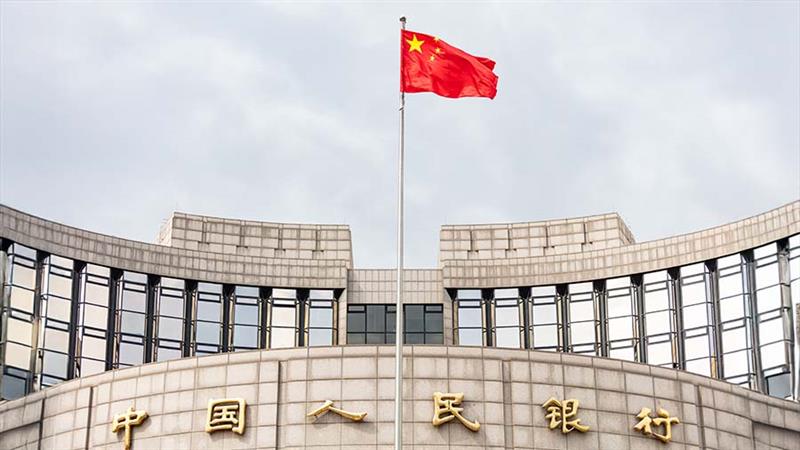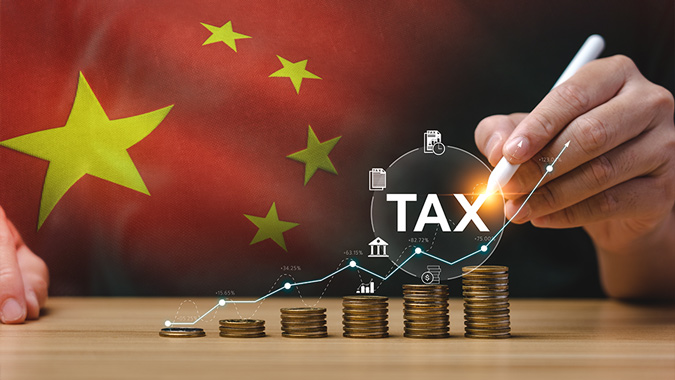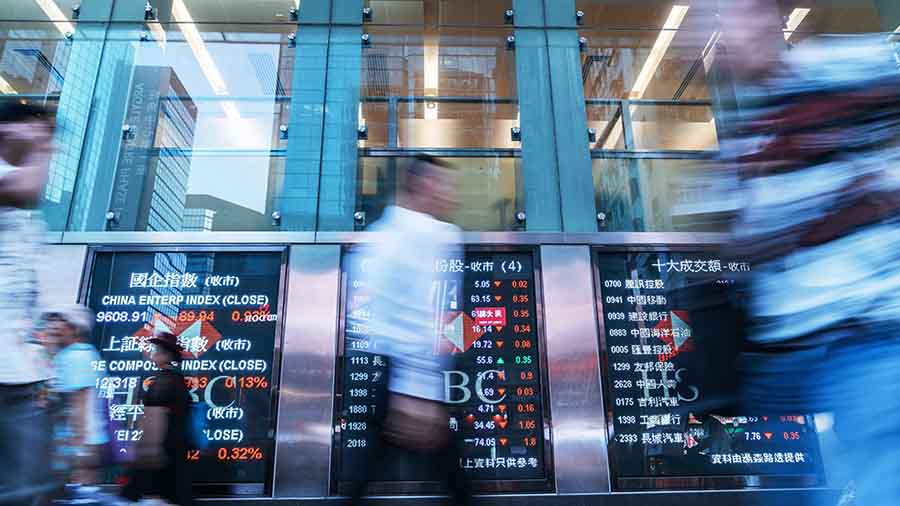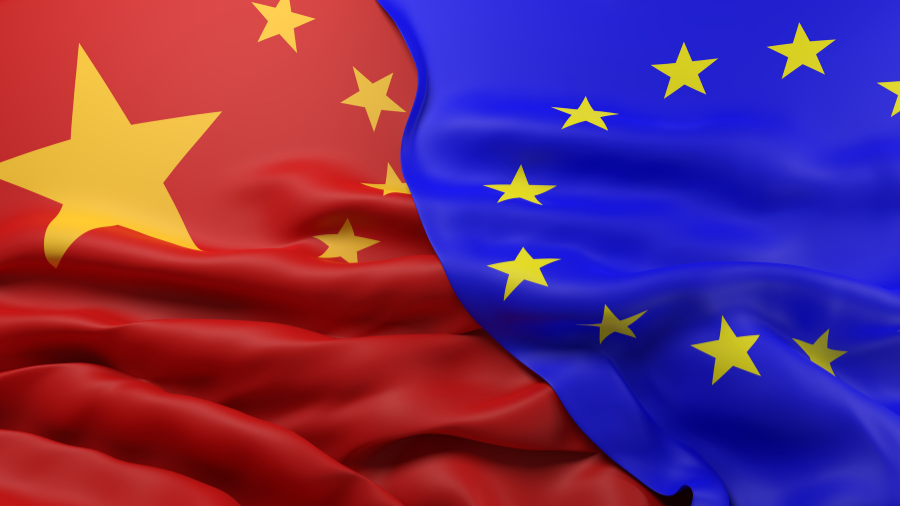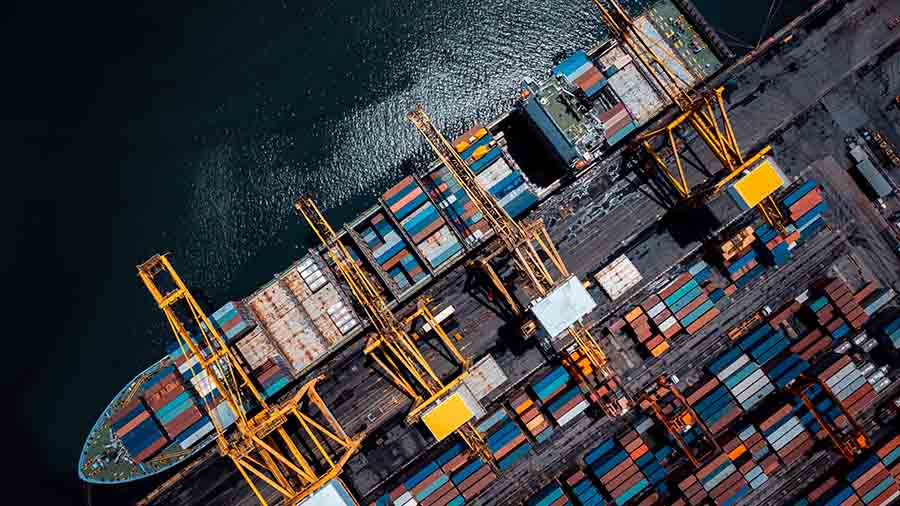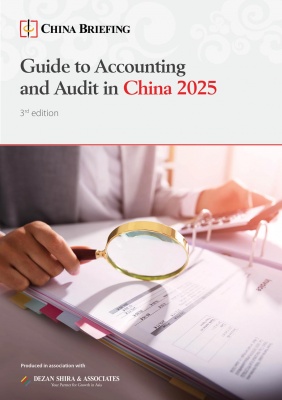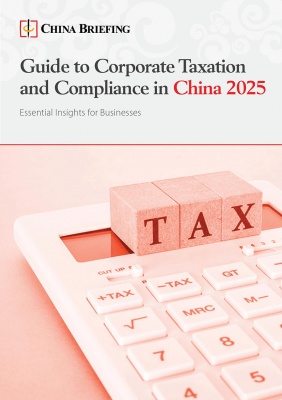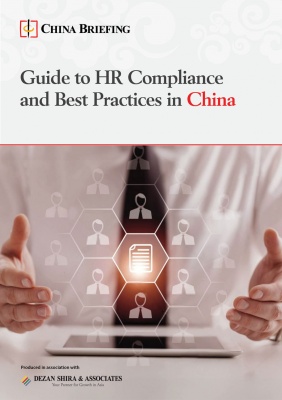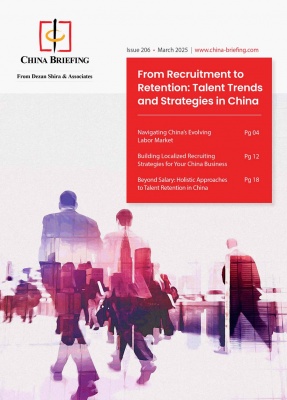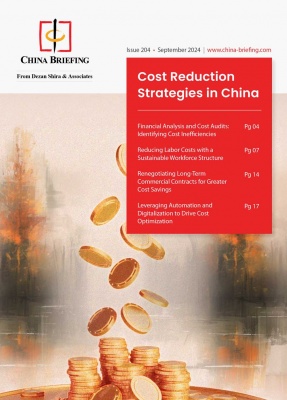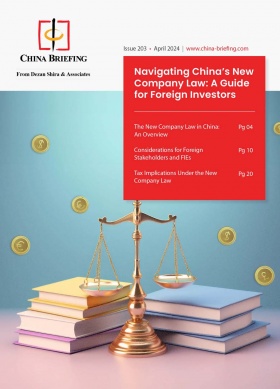China-Thailand Economic Ties: Trade and Investment Opportunities
- China is Thailand’s largest trading partner, while Thailand is China’s third-largest trading partner among ASEAN countries. In 2023, the bilateral trade volume reached US$126.28 billion. China is the primary export market for Thai agricultural products, consistently absorbing over 40 percent of Thailand’s agricultural exports. Nearly 80 percent of China’s exports to Thailand consist of capital goods and intermediate goods.
- China is the primary source of foreign investment in Thailand. There are approximately 1,000 Chinese enterprises investing in Thailand. Over the past two years, 588 investment projects have been registered, with a total investment amounting to nearly US$7 billion. Chinese investments are mainly concentrated in electric vehicles, the digital economy, new energy, and other modern manufacturing industries.
China and Thailand have shared a comprehensive strategic cooperation partnership since 2013. The strong bilateral relationship supports both countries in developing alongside each other. In addition to traditional economic contributors, such as tourism and exports, the Kingdom of Thailand is emerging as an electric vehicle (EV) hub in Southeast Asia through cooperation with China and continually aims to attract manufacturers from the EV, lithium battery, and green energy industries.
Bilateral relationship
China and Thailand officially established diplomatic relations in 1975 and continue to expand them robustly to this day. Tourism and exports are the two largest contributors to Thailand’s economy; therefore, the Thai government has consistently supported China’s Belt and Road Initiative (BRI) due to its need for close cooperation with neighboring countries in economic affairs, trade, and cultural exchanges.
In 2024, Thailand’s Ministry of Foreign Affairs announced that Thailand is pushing forward its plan to become a member of the BRICS group, an economic cooperation league that includes Brazil, Russia, India, China, and South Africa, in order to strengthen its economic power and gain access to larger markets and economic opportunities.
In early 2024, Thailand Prime Minister Srettha Thavisin and Chinese Foreign Minister Wang Yi signed an agreement to waive visa requirements for Chinese visitors starting in March 2024. Historically, Chinese tourists have accounted for nearly 30 percent of international arrivals in Thailand, contributing significantly to the tourism sector, which represents around 12 percent of the country’s GDP. Before the COVID-19 pandemic, Chinese visitor numbers peaked at 11 million annually, but by 2023, only 3.5 million had returned, reflecting a slow recovery in tourist numbers. This visa waiver policy aims to help boost these numbers once again.
Beyond tourism, Deputy Prime Minister and Commerce Minister Phumtham Wechayachai’s visit to Xishuangbanna in Yunnan on April 28, 2024, marked an upgraded cooperation on bilateral trade. Phumtham met with the province’s governor, Dao Wen, to discuss issues such as increasing shipping quotas for Thai fruits and establishing a quarantine zone at the Guanlei Port for live cattle imports from Thailand.
Meanwhile, Dao called for support for direct flights between Xishuangbanna and Bangkok to further promote tourism and trade. These developments reflect Thailand’s delicate balancing act amid the ongoing geopolitical tensions between China and the U.S., both crucial trade partners for Bangkok.
China-Thailand trade dynamics
China exports to Thailand
In 2023, the trade volume between China and Thailand reached US$126.3 billion, with China holding a trade surplus of US$25.1 billion. The manufacturing sector is the primary focus of China’s exports to Thailand, with particular emphasis on the provision of raw materials and essential components. In 2023, a significant portion of these exports was silicon wafers, used in producing solar cells, with a total value of US$1.29 billion. By importing raw materials, processing them into intermediate or finished goods, and then exporting them to other countries, Thailand is leveraging the value-added economy. In addition to exporting goods and services, China’s tourists made a significant contribution to Thailand’s economy in 2023, with an expenditure of US$5.4 billion.
The EV is another emerging sector that China exports to Thailand. In 2023, Thailand’s total motor vehicle registration grew by 4.6 percent from the previous year, with EV registrations accounting for 11.6 percent of the total, a substantial increase from 1.5 percent in 2022. Among the top five EV brands registered in Thailand, four were Chinese: BYD, Neta, MG, and GWM. Chinese brands made up 80 percent of EV vehicles sold in Thailand in 2023. Thailand’s government initiatives to increase domestic demand for electric vehicles have contributed to the increasing market share of Chinese electric vehicles, which has further strengthened China’s position as a significant supplier in this industry.
| Top Products Exported from China to Thailand, 2023 | ||
| Product category | Value (US$) billion | Annual growth in value between 2019-2023 |
| Electrical machinery and equipment and parts thereof; sound recorders and reproducers, television image and sound recorder and reproducer, and parts of such articles | 15.5 | 15 |
| Nuclear reactors, boilers, machinery and mechanical appliances; parts thereof | 10.9 | 9 |
| Vehicles other than railway or tramway rolling stock, and parts and accessories thereof | 5.2 | 40 |
| Plastics and articles thereof | 3.9 | 17 |
| Iron and steel | 3.7 | 16 |
| Articles of iron or steel | 3.3 | 22 |
| Furniture, bedding, lighting products | 2.6 | 22 |
| Source: ITC Trade Map | ||
Thailand exports to China
In 2023, Thailand’s total export value reached US$275 billion, with a notable increase in the fourth quarter of US$68.8 billion, representing a 4.6 percent rise compared to the third quarter. This increase was primarily driven by manufacturing products, including a significant 185.3 percent surge in computer exports and a 52.2 percent rise in petroleum product exports. Exports to China grew for two consecutive quarters by 0.4 percent, largely due to increased shipments of automatic data processing machines and parts, rubber, as well as wood and wood products.
Despite the growth in exports, Thailand faced a trade deficit with China, totaling US$25 billion in 2023. This deficit has been steadily increasing since 2022 and is expected to persist in the near future. Thailand primarily imports electrical appliances, equipment, and automobiles from China, while exporting agricultural products such as fruits, rubber, and wood products. Given the structure of this trade, the deficit is unlikely to decrease in the short term.
| Top Products Exported from Thailand to China, 2023 | ||
| Product category | Value (US$) billion | Annual growth in value between 2019-2023 |
| Edible fruit and nuts; peel of citrus fruit or melons | 6.1 | 30 |
| Rubber and articles thereof | 4.2 | 3 |
| Nuclear reactors, boilers, machinery and mechanical appliances; parts thereof | 3.1 | -1 |
| Electrical machinery and equipment and parts thereof; sound recorders and reproducers, television image and sound recorder and reproducer, and parts of such articles | 2.9 | 0 |
| Plastics and articles thereof | 2.7 | -5 |
| Wood and articles of wood; wood charcoal | 1.4 | 6 |
| Edible vegetables and certain roots and tubers | 1.1 | 25 |
| Source: ITC Trade Map | ||
Thailand investment
China invests in Thailand
The Thai government is actively pursuing strategies to bolster foreign investor confidence by capitalizing on the advantages of investment base relocations. Key sectors targeted for growth include high-value food products, health-related goods, and intermediate goods production, all of which are crucial for Thailand’s integration into global value chains. By enhancing the production and export capacity in these high-potential industries, Thailand aims to strengthen its competitiveness and attract more foreign investment, positioning itself as a critical player in regional and global trade.
China has become Thailand’s largest foreign investor by 2023. During the first nine months of the year alone, Chinese investments totaled US$2.84 billion across 264 projects, representing 24 percent of Thailand’s total foreign direct investment (FDI) by value. This upward trend is expected to continue as Thailand seeks to attract more foreign capital to support its vision of a cleaner, more sustainable economy with long-term development goals.
Thailand’s role as Southeast Asia’s leading production center for combustion engine vehicles is evolving, with the country now positioning itself as a hub for EV manufacturing. Chinese EV manufacturers such as BYD and Great Wall Motor have already invested at least US$1.44 billion to build new facilities in Thailand, solidifying the country’s place as a regional hub for EV production. These investments align with Thailand’s strategy to promote value-based industrial growth and further advance green development goals shared by both Thailand and China.
Chinese companies are likely to continue playing a leading role in Thailand’s FDI landscape, with investments spanning multiple sectors, especially in EV and its parts and accessories. The top five FDI sources in Thailand from Chinese companies are shown in the table below.
| Chinese Companies FDI in Thailand | ||
| Company | Investment (US$ million) | Activity |
| GWM | 1.61 | Build EV production plant |
| BYD | 1.52 | Build EV production plant |
| SAIC | 1.17 | Build EV production plant |
| Kingboard Holdings | 1.17 | Build manufacturing facilities for fiberglass yarn and fabric. |
| Changan | 0.93 | Build EV and EV battery plant |
| Source: Office of the National Economic and Social Development Council | ||
| Foreign Direct Investment from China in Thailand | |||||||
| Year | 2023 | 2022 | 2021 | 2020 | 2019 | 2018 | 2017 |
| Value (US$ billion) | 2.84 | 2.34 | 1.49 | 1.88 | 1.37 | 0.74 | 1.06 |
| Source: The Board of Investment of Thailand and Thailand Board of Investment | |||||||
China-Thailand agreement
China-Thailand Double Taxation Avoidance Agreement
China and Thailand signed the double taxation agreement (DTA) on September 27, 1986. Some key aspects of the agreement include:
- Residency and tax jurisdiction: The DTA defines the tax residency of individuals and companies, specifying which country has primary tax rights over income generated in cross-border situations.
- Tax rates: The agreement limits the tax rates imposed on various forms of income, such as dividends, interest, and royalties, ensuring fair taxation and reducing the tax burden on investors.
- Exchange of information: The DTA facilitates cooperation between Chinese and Thai tax authorities by allowing the exchange of tax-related information to prevent tax evasion.
- Dispute resolution: The agreement establishes mechanisms for resolving disputes that may arise in the interpretation or application of the treaty.
Under the DTA between China and Thailand, withholding tax rates on certain types of income are reduced to encourage cross-border trade and investment. The key withholding tax rates are as follows:
- Dividends: The withholding tax rate on dividends is reduced to 10 percent if the recipient holds at least 25 percent of the shares in the company paying the dividends. For other dividends, the withholding tax rate is 15 percent.
- Interest: The withholding tax on interest is capped at 10 percent of the gross amount.
- Royalties: 15 percent.
Mini-Free Trade Agreement
The Mini-Free Trade Agreement (Mini-FTA) between Thailand and China’s Hainan province, effective from August 2021 to August 2023, aimed to boost trade to US$359 million. It focused on key areas such as improving trade information exchange, supporting SMEs, and promoting business linkages through innovation and product development. The agreement also sought to expand trade in food, agricultural, and industrial products, while promoting e-commerce.
This deal highlights Thailand’s intent to strengthen ties with Chinese provinces, with Gansu being a potential next target.
Proposed VAT on low-priced Chinese imports
The Thai government is contemplating the introduction of a seven percent value-added tax on Chinese goods priced under US$40 that pass through Thailand’s free trade zone. This measure aims to safeguard local businesses facing challenges from an influx of inexpensive imports, which have been significantly affecting their competitiveness. By imposing this tax, the Thai authorities seek to level the playing field for domestic producers while also managing the impact of trade dynamics within the ASEAN region.
ASEAN-China Free Trade Agreements
The ASEAN-China Free Trade Area (ACFTA) was first established with the signing of the Framework Agreement on China-ASEAN Comprehensive Economic Cooperation at the sixth China-ASEAN Summit in November 2002. This initial agreement laid the foundation for closer economic and trade relations between China and ASEAN countries (including Vietnam) and was followed by the signing of the Agreement on Trade in Goods in November 2004, which took effect in July 2005. Subsequently, the Agreement on Trade in Services was signed in January 2007 and became effective in July of that year, and the Agreement on Investment was signed in August 2009.
Negotiations for further amendments and upgrades to the ACFTA have been ongoing, with the ACFTA 3.0 version aiming to create a more inclusive, modern, comprehensive, and mutually beneficial FTA. These negotiations, launched at the 25th ASEAN-China Summit in 2022, have involved various working groups and the ACFTA Special Joint Committee. The third round of negotiations took place from June 24 to 27, 2023, in Kunming, China, with a focus on enhancing cooperation in emerging fields such as the digital economy, green economy, and supply chain connectivity. Both parties are committed to completing the negotiations within 2024. As of May 2024, six rounds of negotiations have been held.
RCEP
China and the 10 ASEAN countries (including ASEAN) are members of the Regional Comprehensive Economic Partnership (RCEP), the world’s largest free trade agreement (FTA). Australia, Japan, New Zealand, and the Republic of Korea are also members.
The RCEP aims to simplify and unify trade rules among member countries to reduce trade barriers and create a more seamless trading environment. The agreement covers a broad range of areas, including trade in goods and services, investment, intellectual property, e-commerce, small and medium-sized enterprises (SMEs), economic and technical cooperation, and government procurement.
One of the major commitments of the RCEP is the gradual elimination of about 92 percent of tariffs for traded goods over the 20 years following the agreement taking effect. This is particularly beneficial for export-oriented economies, such as China, Vietnam, and Singapore, as it will enable preferential market access for goods from member countries, increasing their competitiveness in regional markets.
About Us
China Briefing is one of five regional Asia Briefing publications, supported by Dezan Shira & Associates. For a complimentary subscription to China Briefing’s content products, please click here.
Dezan Shira & Associates assists foreign investors into China and has done so since 1992 through offices in Beijing, Tianjin, Dalian, Qingdao, Shanghai, Hangzhou, Ningbo, Suzhou, Guangzhou, Haikou, Zhongshan, Shenzhen, and Hong Kong. We also have offices in Vietnam, Indonesia, Singapore, United States, Germany, Italy, India, and Dubai (UAE) and partner firms assisting foreign investors in The Philippines, Malaysia, Thailand, Bangladesh, and Australia. For assistance in China, please contact the firm at china@dezshira.com or visit our website at www.dezshira.com.
- Previous Article Accounting Digitalization in China: Managing the Impact of Fully Digitalized E-Fapiao and the New Accounting Law
- Next Article China-Switzerland Economic Ties: Trade and Investment Highlights

